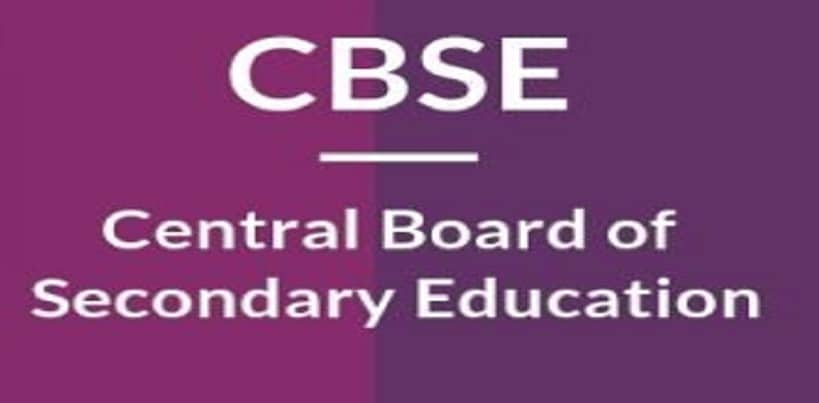CBSE FULL FORM
Full Form of CBSE : Central Board of Secondary Education.
What is the full form of CBSE?
No:1. Full form of CBSE is the Central Board of Secondary Education.
No:2. It is an Indian national level education board for private and public schools, operated and regulated by the Indian Union Government.
No:3. CBSE has demanded that all affiliated schools adopt NCERT curricula only.
No:4. There are approximately 20,299 schools in India and 220 CBSE affiliated schools in 28 international countries.
No:5. Some critical information about CBSE is given in the table below
No.-1. Download 15000 One Liner Question Answers PDF
No.-2. Free Download 25000 MCQ Question Answers PDF
No.-3. Complete Static GK with Video MCQ Quiz PDF Download
No.-4. Download 1800+ Exam Wise Mock Test PDF
No.-5. Exam Wise Complete PDF Notes According Syllabus
No.-6. Last One Year Current Affairs PDF Download
No.-7. Join Our Whatsapp Group
No.-8. Join Our Telegram Group
| CBSE Full Form | Central Board of Secondary Education |
| Establishment | 03/11/1962 |
| Official language | Hindi and English |
| Head office | New Delhi, India |
| Official website | https://cbse.nic.in/ |
| Chairman | IAS Manoj Ahuja |
History of CBSE is given below
No:1. In 1921, the first educational board to be set up in India was the Uttar Pradesh Board of High School and Intermediate Education, which was under the control of Rajputana, Central India and Gwalior.
No:2. In 1929 the Indian government established a joint board called Rajputana, Board of High School and Intermediate Education.
Eligibility criteria to attend CBSE Examination are as follows
No:1. The test that CBSE carries out for class ten students is known as AISSE, while the test is called as AISSCE for 12th-grade students.
No:2. Every year CBSE also carries the National Eligibility Test (NET) for teacher recruitment.
No:3. Only enrolled students in CBSE-affiliated schools can show up in 10th class AISSE and 12th class AISSCE examination.
No:4. For these examinations, students from every creed, caste, religion, sect, economic status, gender, race or tribe may appear.
No:5. For the NET exam, students who complete their Master’s degree through an aggregate of over 50 % from a board or university recognized by UGC in social sciences, humanities, etc. may appear under CBSE regulations.
Primary objectives of CBSE are as follows
No:1. Defining suitable academic methods for stress-free, comprehensive and child-focused academic achievement without sacrificing quality.
No:2. Track and review the variety of educational activities based on feedback gathered from various stakeholders.
No:3. Suggesting plans to boost school education in line with national goals.
No:4. Organizing capacity development activities to upgrade teachers’ skills and professional competencies.
No:5. To prescribe the examination condition and format and to conduct 10th and 12th class final examinations.
No:6. To recommend and modify exam instructions or guidelines.
About CBSE Regional office
CBSE has 10 regional offices which are :
1). Delhi – Which covers NCT of New Delhi and Foreign Schools.
2). Chennai – Which includes Andhra Pradesh, Andaman and Nicobar Islands Daman and Diu, Karnataka, Goa, Maharashtra, Tamil Nadu, Puducherry and Telangana.
3). Guwahati – Which covers Assam, Arunachal Pradesh, Manipur, Mizoram, Meghalaya, Nagaland, Tripura and Sikkim.
4). Ajmer – Which includes Gujarat, Dadra and Nagar Haveli, Rajasthan and Madhya Pradesh.
5). Panchkula – Which covers Haryana, Chandigarh, Punjab, Himachal Pradesh, Jammu and Kashmir.
6). Allahabad – Which covers UP and Uttarakhand.
7). Patna – Which covers Jharkhand and Bihar.
8). Bhubaneswar – Which includes West Bengal, Chhattisgarh and Odisha.
9). Thiruvananthapuram – Which covers Lakshadweep and Kerala.
10). Dehradun – Which covers Uttar Pradesh and Uttarakhand.
Examinations conducted by CBSE Board are
No:1. Each year the CBSE holds final exams for students in 10 and 12 classes.
No:2. Every year CBSE carries out AIEEE.
No:3. It also conducts annual NEET (National Eligibility cum Entrance Test).
No:4. CBSE also performs a yearly CTET (Central Teachers Eligibility Test) to hire teachers for the central educational school.
No:5. It is responsible for the appointment of professors at colleges and universities by NET (National Eligibility Test) examination.
Advantages of CBSE are given below
No:1. Compared with other Indian boards, the curriculum is more straightforward and lighter.
No:2. The number of CBSE schools is considerably higher than any board, making it much easier to change schools, particularly when the student has to go to another state.
No:3. Many competitive exams in India at the undergraduate level are based on CBSE recommended syllabus.
No:4. CBSE allows students to engage in curricular and co-curricular events.
No:5. Students of CBSE are considered to be more proficient in English compared to other state board students.
ALSO READ : DNA FULL FORM
No.-1. Download 15000 One Liner Question Answers PDF
No.-2. Free Download 25000 MCQ Question Answers PDF
No.-3. Complete Static GK with Video MCQ Quiz PDF Download
No.-4. Download 1800+ Exam Wise Mock Test PDF
No.-5. Exam Wise Complete PDF Notes According Syllabus
No.-6. Last One Year Current Affairs PDF Download
No.-7. Join Our Whatsapp Group
No.-8. Join Our Telegram Group

